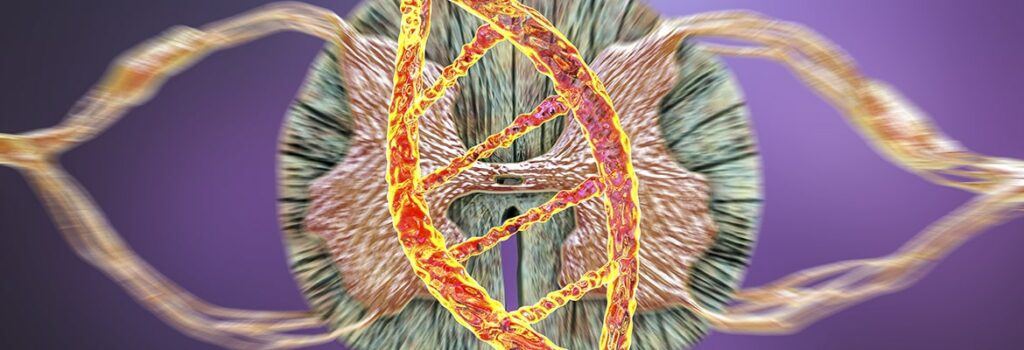SUNFISH shows efficacy of risdiplam in patients with spinal muscular atrophy
By Shreeya Nanda, medwireNews Reporter
Risdiplam significantly improves the motor function of patients aged 2–25 years with type 2 or nonambulant type 3 spinal muscular atrophy (SMA) relative to placebo, report the SUNFISH investigators in The Lancet Neurology.
Exploratory subgroup analyses pointed to greater benefits in younger than older patients, leading the author of an accompanying commentary to say: “Risdiplam clearly represents a potential new treatment opportunity for young children with spinal muscular atrophy.
“The data in adults, although encouraging, need to be confirmed in larger cohorts and over longer periods than in this study.”
Valeria Sansone, from the University of Milan in Italy, continues: “Clinicians should discuss risdiplam with patients and families as a new treatment opportunity with a good tolerability and safety profile, but emphasise that unanswered questions exist for use in adults with spinal muscular atrophy when considering efficacy and long-term expectations.”
Eugenio Mercuri (Catholic University and Policlinico Agostino Gemelli, Rome, Italy) and co-investigators report on part 2 of the phase 2/3, double-blind SUNFISH trial, the pivotal study that led to the approval of the SMN2 pre‐mRNA splicing modifier in the USA and Europe. Participants were aged 2–25 years, had confirmed 5q autosomal recessive type 2 or type 3 SMA, were nonambulant but could sit independently, and had a score of at least 2 in entry item A of the Revised Upper Limb Module.
The primary endpoint of the change from baseline in the 32-item Motor Function Measure (MFM32) total score at 12 months differed significantly between the 115 evaluable patients who were randomly assigned to receive oral risdiplam – at a daily dose of 5 mg for individuals weighing 20 kg or more and 0.25 mg/kg for those with a lower weight – and their 59 counterparts who instead received placebo.
Specifically, the least squares mean change from baseline was 1.36 points in the risdiplam group and –0.19 points in the placebo group, which equated to a between-group difference of 1.55 points in favour of risdiplam.
A prespecified exploratory analysis by age group showed that the greatest improvement in the total MFM32 score with risdiplam versus placebo was observed among patients aged 2–5 years, with a between-group difference favouring risdiplam of 3.14 points.
The treatment difference decreased with increasing age, at 1.58 points for participants aged 6–11 years and 1.04 points for those aged 12–17 years, with no improvement from baseline observed for those aged 18–25 years, at –0.65 points, report the study authors.
“Contractures and scoliosis, which are unlikely to be affected by increased functional SMN expression, worsen with age and negatively affect motor function”, they comment.
“Functional improvement would therefore be expected in younger patients, whereas for older patients with more advanced disease, functional stabilisation would be considered an important treatment benefit.”
Adverse events (AEs) that occurred more frequently in the risdiplam versus placebo group were pyrexia (21 vs 17%), diarrhoea (17 vs 8%), rash (17 vs 2%), mouth and aphthous ulcers (7 vs 0%), urinary tract infection (7 vs 0%) and arthralgia (5 vs 0%).
Serious AEs occurred in a comparable 20% of risdiplam-treated patients and 18% of those given placebo, while the rates of grade 3 or 4 AEs were 18% and 13%, respectively. There were no grade 5 AEs in either treatment arm.
“No adverse events led to dose modification of risdiplam; interruptions of treatment were short term and occurred in both groups”, say Mercuri and colleagues, adding that “[o]phthalmological assessments did not show evidence of risdiplam-induced retinal toxicity.”
The team concludes: “SUNFISH part 2 is, to our knowledge, the first randomised, double-blind, placebo-controlled clinical study of an oral treatment for spinal muscular atrophy to report such a result in a patient population with a broad range of ages and functional status, including individuals with advanced disease and comorbidities.”
News stories are provided by medwireNews, which is an independent medical news service provided by Springer Healthcare Ltd. © 2022 Springer Healthcare Ltd, part of the Springer Nature Group
Lancet Neurol 2022; 21: 42–52
Lancet Neurol 2022; 21: 23–24
Article link https://pubmed.ncbi.nlm.nih.gov/34942136/
Commentary link https://pubmed.ncbi.nlm.nih.gov/34942130/

